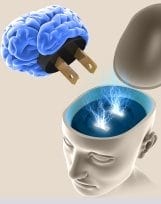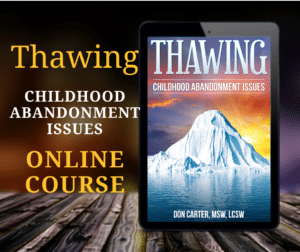
Teenager Self Esteem and Development
Teenager self-esteem is based on their personal evaluation of how well they measure up in comparison to others around them. It’s also heavily influenced by the impact of every significant emotional event in their life – both positive and negative. There are specific stages or periods of development that kids go through…or should we say “grow through”… here we take a look at Morris Massey’s Periods of Child Development.
Teenager Self Esteem – Imprint Period (1 to 7)

During the Imprint Period kids have not yet developed their mental filters. The most important things to a child are Mom and Dad – and their “blankie” of course.
So in a manner of speaking… Mom and Dad are the family hypnotists. The things that Mom and Dad say to their children… including the messages they send through their own behavior… are like implanting post-hypnotic suggestions into their minds that will stay with them for life.
Yes, kids ask a lot of questions…but they cannot put two and two together very well because they have not yet developed the ability to think in abstract terms. If they cannot hear it, see it, or touch it…it does not exist.
Little kids learn right from wrong like pets learn to obey… creating “habits” by laying down neural networks for the behavior through intensity and repetition. This is why you have to repeat yourself so many times when teaching your children such things as table manners, how to behave in public, not to pick their noses, etc.
So all the basic neural networks for how to do things in life are being laid down in this period of life. Most of us have been given very good programming from our “family hypnotists” in many ways.
Likewise, most of us have been given some very ineffective neural networks that have haunted us and/or dogged our heels most of our lives… some more than others. Have you ever asked yourself “Why do I do that!?” Things like…
- Tell myself I “can’t do anything right” when I make a simple mistake
- Engage in approval or attention seeking behaviors
- Feel guilty when receiving a compliment
- Experience repetitive negative themes in important relationships — See Psychological Games
- Push other people away just when they are getting close
- Have certain “buttons” that get pushed by others and you don’t know why
And why don’t we know where “that” comes from? Because it’s operating from our subconscious mind – more specifically from our Implicit Memory.
- Explicit Memory – Explicit memory consists of networks of the factual data that we can recall consciously … names, faces, significant emotional events, being in first grade, old friends, major accomplishments, etc. Key Point: Learning is about creating explicit memories and/or transforming them into implicit memories — something we spend a lot of time doing every day.
- Implicit Memory – Implicit memory consist of networks of skills, habits, and beliefs that we learn so well that they “drop into” our subconscious mind… like how to walk, talk, ride a bike, play psychological games and relationship mind games, etc…a neural network has been laid down in our implicit memory banks making the belief or pattern of behavior “second nature”. Key Point: Once we are “programmed” with an implicit neural network for these skills, beliefs, and habitual behaviors, consciously recalling the mechanics or circumstances involved in learning them is no longer necessary… we just automatically “know” they are truths about “reality” (beliefs) and how to do them (skills & habitual behaviors).
This is why I do certain things and “don’t know why”. It also explains why beliefs are not always easy to change even when we want to let them go. You have probably heard the statement…”It’s like riding a bike, you never forget”. Implicit memory is how deeply kids soak everything in during the Imprint Period.
Self-esteem is the result of how a person evaluates themselves. Evaluating self is a habitual pattern of behavior — something we do over and over again. Our here-and-now evaluations are rooted in there-and-then childhood experiences and our perception of messages received from our parents and other important people in our life. As children in the Imprint Period, we take things very literally… and our brains never forget when to feel bad in response to a certain “trigger” in the here-and-now.
Key Points: To a child, perceived parental messages — either directly expressed or implied through role-modeling — are many times very intense and/or repetitious. It’s important to remember that parents were programmed by their parents…who were programmed by their parents…and so on. Parents cannot be blamed for their subconscious programming any more than they can for their genetics. However, once we become aware of problems we can learn and practice new patterns of behavior to provide alternatives to the old implicit networks that do not serve us or others very well.
So, when you are looking for the roots of teenager self-esteem problems — look in the Imprint Period first. If you have not already done so, you may want to read the information on Emotional Dependency Needs of Children. If you have not had kids yet but are planning to or if you are working on your own self-esteem issues then it would be great for you to read the “Iceberg” to find out what happens to kids who don’t get their dependency needs met and what to do about it.
Teenager Self Esteem – Modeling Period (8 to 13)
In the modeling period the child, both consciously and subconsciously, begins to model the behaviors of people around them. Until around the age of seven, most children do not distinguish between self and parents. However, around eight years of age, the child begins to separate enough notice the differences between self and parents. Now he or she develops awareness of other people.
They begin to model or emulate the behavior of their heroes and/or people who they look up to in their life. Certain mental filters such as individual values begin to form at this age. The child is beginning to form a sense of self…an identity of their own. From eleven to thirteen they play around with different roles and different ways of being based upon their favorite role models. This is the beginning stages of adolescence – Separation, and Individuation.
Teenager Self Esteem – Socialization Period (14 to 21)
During this stage, the developing teenager begins to shift focus from family to friends. Relationships and social values form and usually last throughout life. If teenager self esteem issues revolve around difficulty in the social areas of life, look for possible root causes in this period as well. Visit the page on teenagers and social development for details of this period.






